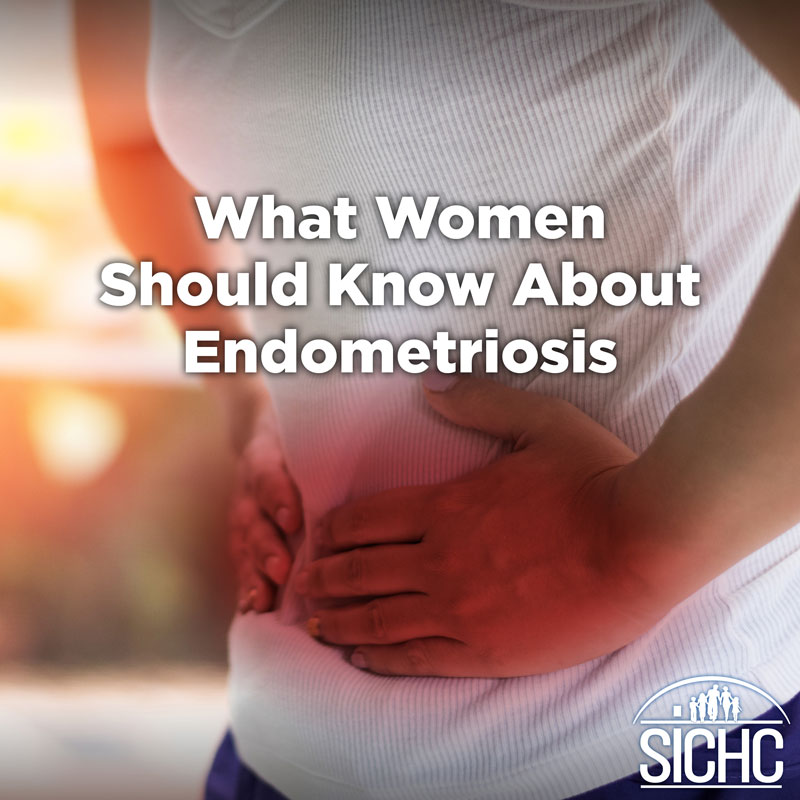What Women Should Know About Endometriosis

By Melissa Ray, FNP
It can first appear as chronic unexplained abdominal or lower back pain, or unusual conditions during a menstrual cycle. The pain can inexplicably get worse before and during menstruation, or while having sex.
These can represent symptoms of endometriosis, a condition that affects about 11% of American women aged 15 to 44. While it doesn’t affect all women, endometriosis is one of the most common gynecological diseases. Since March is Endometriosis Awareness Month, now is a good time to learn what unexplained symptoms might mean, why you should see your medical professional if you have symptoms, and what treatments are available to you.
What is Endometriosis?
Endometriosis, commonly called “endo,” is diagnosed when female cells that typically only appear in the lining of a woman’s uterus (technically called the endometrium) start to grow in other areas of a woman’s body outside of the uterus lining. These misplaced cells still follow the physical menstrual cycle of a woman’s body, even though they are not physically located in the woman’s uterus.
It hurts! Chronic pain, including severe and uncomfortable pain, can result from the cells trying to respond to the menstrual period. The areas where these cells grow may be called implants, nodules or patches.
The origin and cause of endometriosis is not fully understood. Endometriosis occurs most of the time in other parts of the female reproductive system or nearby. “Endo” patches can appear in tissue that lines a woman’s abdominal wall (peritoneum), her ovaries, fallopian tubes or even in the woman’s bladder, intestines, or rectum.
One of the reasons that a regular annual exam is important for women is that sometimes endometriosis has no pain associated with the condition. In severe cases, untreated endometriosis can lead to infertility and an inability to conceive and have children.
Can I tell if I have “endo”?
No simple test exists to diagnose whether endometriosis exists. If your medical professional suspects the presence of endometriosis, a physical exam (including a pelvic exam) will typically be conducted. Endometriosis can produce identifiable physical cysts, scars or nodules.
Your medical professional may also schedule an imaging test (ultrasound or MRI). A procedure called a laparoscopy may follow to take a tissue sample. That will help confirm the diagnosis of endometriosis.
What are available treatments?
Potential treatments should be discussed with your medical professional, particularly if you desire to conceive and have children. Simple over-the-counter (OTC) or prescription pain relievers can help. Your medical professional may suggest hormone therapy. Some surgical procedures do physically remove the nodules (or “patches”) may be recommended, particularly if other treatment options don’t provide adequate relief, or if women want to address potential fertility issues.
If you have been trying to conceive and have children, but have not yet been successful, ask your medical professional about a possible diagnosis of endometriosis. It’s estimated that close to four in ten women who experience infertility actually have endometriosis that is causing inflammation. The inflammation can prevent or complicate conception. Treatment is available to help address this issue.
Don’t wait
If you’re having unusual, chronic pain or heavy menstrual flow, contact your medical professional – don’t wait. Relief and treatment are available to you today.
Melissa Ray is a board-certified Family Nurse Practitioner. Her work at SICHC includes primary and obstetrics care, pregnancy, well-baby, and well-woman services.
